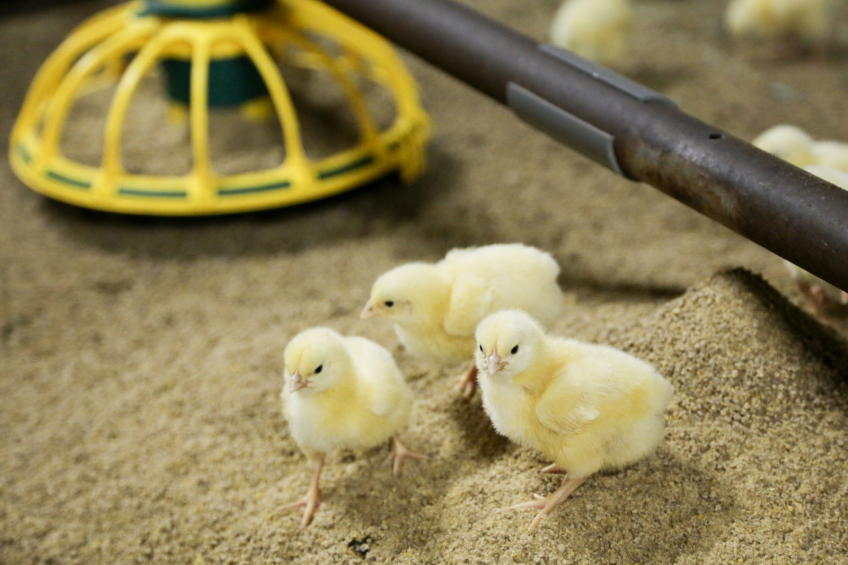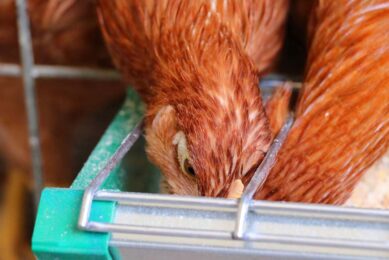Understanding protein requirements

Protein is a vital nutrient for poultry and all other classes of animals. In virtue of its amino acid constituents, protein plays a significant role in growth, egg production, immunity, adaptation to the environment, and in many other biological functions.
Optimisation of protein supply requires a thorough understanding of the protein requirements of chickens and manipulation of protein supply to better suit various environmental conditions, health status of birds, and economic feeding. This article is intended to examine these aspects based on results of recent studies conducted in this particular area of poultry nutrition.
Biological functions of protein
As stated above, protein is needed for enhancing growth, egg production, immunity, and adaptation to the environment. In addition, there are other biological functions which are attributed to specific amino acids. Lysine, for example, has an important role in improving carcass quality of chickens by supporting formation of type IIb fibre which hold smaller amounts of fat and have low cooking loss (loss of nutrients in the cooking water), as opposed to type IIa fibres which are formed in the carcasses in case of lysine deficiency. Thrionine, on the other hand, has significant metabolic roles and helps regulation of GI secretions and endogenous losses, thereby improving digestibility of nutrients and preventing digestive disorders. Other amino acids, such as methionine, may partly compensate for a deficiency of choline or vitamin B12 by providing needed methyl groups. Also, the amino acid tryptophan may alleviate niacin deficiency through metabolic conversion to niacin. However, these conversion processes are of theoretical interest only, as it would be poor economics to satisfy a vitamin deficiency by addition of relatively more expensive amino acids.
Requirements
For broiler chickens, diets are often formulated to contain 22% protein for the starter feed and 19% for the finisher feed, with a metabolisable energy value in the order of 3.3 ME/Kg. Chickens may respond differently to the increased protein level in the diet, depending mainly on the protein quality and the amino acid profile thereof. With low quality protein having inadequate and/or imbalanced amino acids, increasing dietary protein in this case will have no effect on performance in terms of growth, feed efficiency and carcass traits, but may rather lead to high mortality and leg problems, particularly in the finishing phase. Addition of the first limiting amino acids in this case will, therefore, be necessary and will result in an increased productive output in the bird. This effect, however, will continue until the maximum genetic potential of the bird is reached or the amino acids are no longer limiting.

On the other hand, when high quality protein is fed, the increased level of dietary protein by 2-3% above the recommended level will in this case improve growth rate, feed efficiency and carcass quality and the supplemental amino acids will not have any sound effect on performance. In one study, supplementation of diets having conventional crude protein levels with essential amino acids did not restore growth to that of the higher protein diet. The chickens fed on diets with conventional protein level also had increased abdominal fat which was not reduced by adding essential amino acids but was reduced when the level of high quality protein was increased (Fancher and Jensen, 1989).
The concept of dietary protein level and quality in relation to performance also holds true with the layers. In one study, white leghorn chickens were fed corn-SBM diets containing 11, 14, 17, 18 or 20% crude protein from hatching to 16 weeks of age and then fed 17% crude protein layer diet. Body weights were reduced by feeding 11 or 14% crude protein and the pullets were slightly slower coming into production compared to those fed 17 or 20% crude protein. Egg weight was also depressed by feeding 11 or 14% crude protein diets, probably due to the smaller body weight at 16 weeks of age. These findings may, again, vary depending on the quality of protein fed, as indicated earlier.
Sources of protein
There are many protein sources that are commonly used in poultry diets. Some sources are from plant origin (e.g. soybean meal, cottonseed meal, alfalfa meal, and sunflower meal), and others are from animal origin (e.g. fishmeal and meat and poultry products). These feeds do not only provide protein but also serve as good sources of minerals, vitamins and other nutritional factors.
Each of these protein feeds should, however, be used only in a specific amount in the diet and should thus be mixed with other protein sources. This will help achieve the target protein concentration with better amino acid profile, and also alleviate much of the production and health problems that may potentially arise from using only one protein source in excess of the recommended level (Table 1).
Protein economy
Protein nutrition has a great economic importance, since protein is an expensive item in almost all feed rations. This may be particularly so in areas of the world known to be protein deficient, such as many tropical and subtropical areas. The rationing of feeds for protein should, therefore, be manipulated in such a way that ‘optimal’ rather than ‘maximum’ performance is achieved without too much feed expenditure. The best way to explain this point is by a practical example of a layer feed with 16% or 17% protein. In corn-soybean diets, this difference can be created by adding 3% more of soybean containing 44% crude protein. When this amount replaces corn, there will be an additional cost of about US$3.00/ ton (world market price, 1990’s estimates). In most cases, the real nutritional benefit of such an increase of protein is limited to an increase of about 0.025% of the amino acids lysine and methionine. The same nutritional advantage can be obtained by adding 250g of synthetic lysine and methionine/ ton of feed with a cost of only US$1.00/ ton. Fortunately, access to these synthetic amino acids has become available with the recent advancement of biotechnology, which makes the economic benefits of such an approach quite achievable.

Performance studies on low-protein diets (14% CP) supplemented with lysine and methionine for laying hens revealed no significant difference in egg production or egg weight compared to the control high-protein diets (18% CP). Moreover, feed consumption and protein intake were lower for the amino acid-supplemented diets, resulting in less nitrogen (N) being excreted compared to the control diets (Table 2). This approach is also environmentally sound, as it alleviates much of the problem associated with disposal and management of nitrogen-rich manure.
Step-down protein feeding is also an effective approach in reducing feed costs in egg production and alleviating excess N excretion (Table 3). A simple calculation shows that using step-down protein diets as compared to constant 16.5% protein diets for one year on a farm with 100,000 bird results in the use of 7.5 tons less protein. Depending on feed and egg prices, such an approach might be economically ‘quite’ justifiable. In addition, there is about 4.5 tons less manure nitrogen/year produced, which also makes the step-down feeding environmentally appropriate.
Protein nutrition under heat stress conditions
In the past, it was usually recommended that dietary protein level be increased in order to maintain constant protein intake under heat stress when feed consumption is reduced. Over the years, however, more evidence exists to show that protein requirements of heat-stressed birds may not necessarily be increased. In one study, increasing protein concentration from 17% to 23% did not improve growth of chickens kept between 3-6 weeks of age under high temperature (32°C). This was attributed mainly to the increased N excretion and reduced efficiency of the high-protein diet compared to the low protein diet (Table 4). Protein utilisation is usually better in birds fed low-protein diets, and this fact might be a metabolism adjustment in order to use protein better when provided in limited quantity. In some cases, however, the reduced level of dietary protein may be detrimental if no consideration is given to protein quality and its amino acid profile. It was found that with protein sources having methionine and lysine in the exact amount and proportion, it is possible to reduce 2-4% of diet protein without affecting weight gain and feed conversion. The reduction of any amino acid will, on the other hand, cause its own deficiency, and protein will thus become non-ideal regardless of the protein level.

Protein sources for poultry reared at high altitudes
Birds reared in high-altitude areas often encounter a number of performance, health, and hatchability problems that arise mainly from the reduced environmental oxygen availability in addition to the other climatic conditions such as low temperature and humidity.
To alleviate much of these effects, the diets of the high-altitude birds should be enriched with protein feeds from animal origin. Most of animal protein feeds contain heme-type iron which is better absorbed and utilised by the bird compared to non-heme iron present in plant protein sources such as the conventional legume crops.
The heme-type iron would increase the oxygen carrying capacity of blood and facilitates its utilisation by the cell and would hence improve performance and adaptation to the high altitude. In order to duly achieve this goal, the diet of high-altitude birds should be formulated so as to supply at least 80 mg of iron per kg of feed, with the protein and energy components to be kept at optimal ratios for each production stage.
Protein nutrition under disease conditions
With most disease outbreaks, it may be necessary to increase the level of dietary protein or at least maintain it within the recommended ranges. Protein is a potent regulator of circulation of hormones such as insulin, glucagon, thyroxin, and growth hormones, all of which affect the immune system and hence improve its disease fighting capability. In other cases, however, the increased protein level of the diet can be a contributing factor to some diseases such as necrotic enteritis in broilers, which usually occur 2-6 weeks post hatching. This is due to the over growth of C. perfringens in the small intestine, increasing from a normal level of 104 CFU to 107 or 109 CFU per gram of digesta and causing clinical disease.
With the increased dietary protein level, there will also be an increased activity of the enzyme trypsin in the small intestine. This will, in turn, lead to faster release of coccidia from their oocytes which eventually become so active as to be less responsive to vaccination.
In cases where such bacterial and protozoan agents are likely to prevail, it may then be beneficial, among other measures, to reduce the supply of protein and maintain it below the recommended range in order to alleviate the effect of these pathogens on the birds.
References available upon request.
Join 31,000+ subscribers
Subscribe to our newsletter to stay updated about all the need-to-know content in the poultry sector, three times a week. Beheer
Beheer








 WP Admin
WP Admin  Bewerk bericht
Bewerk bericht